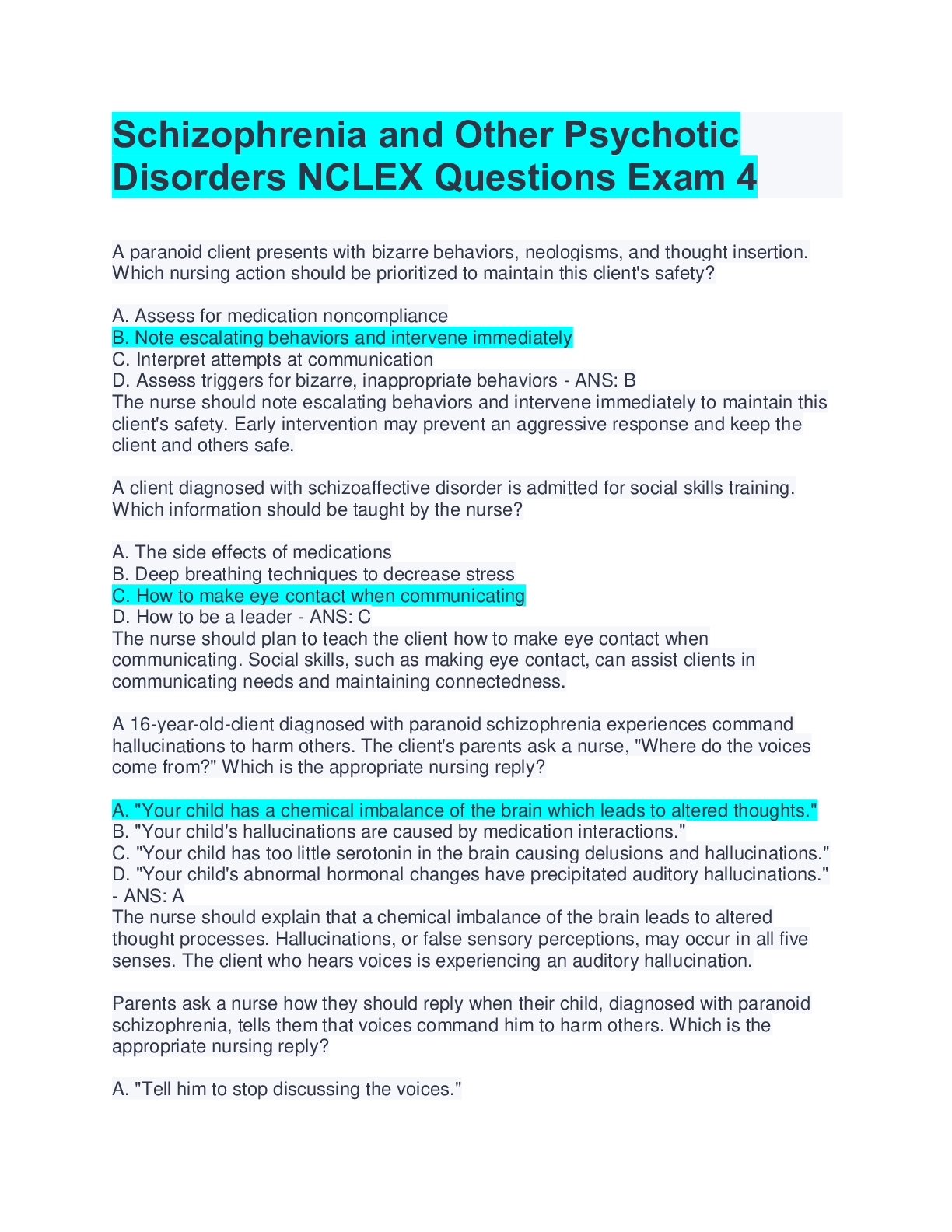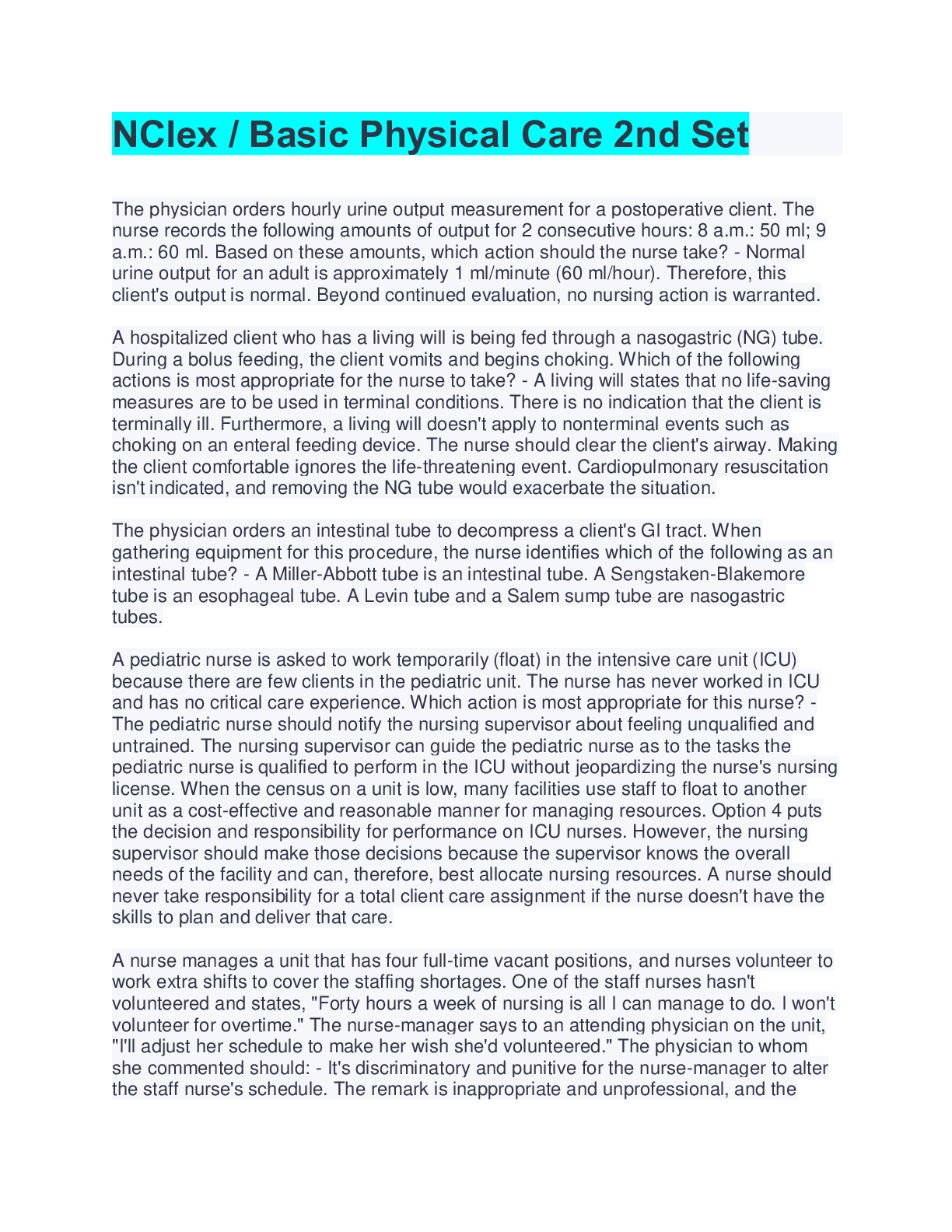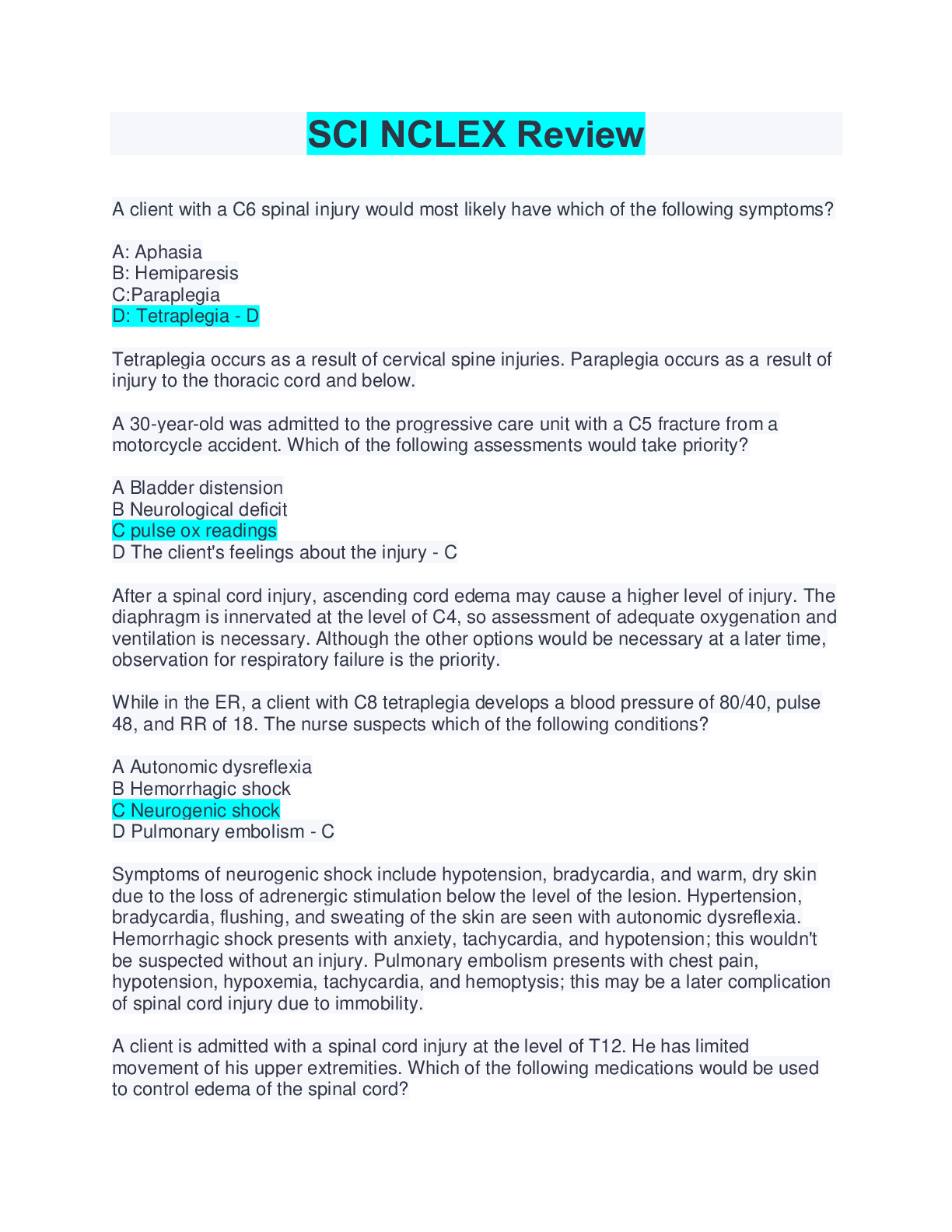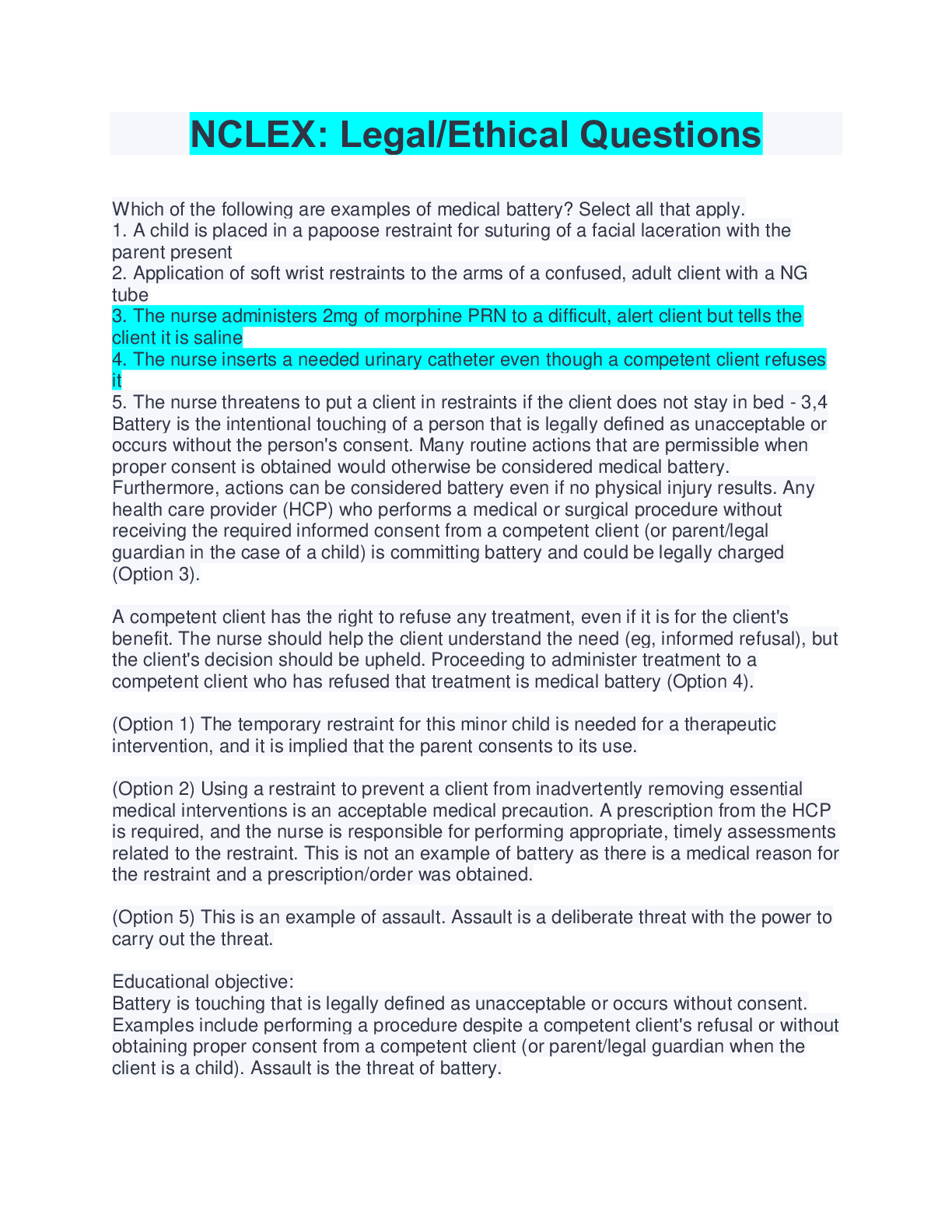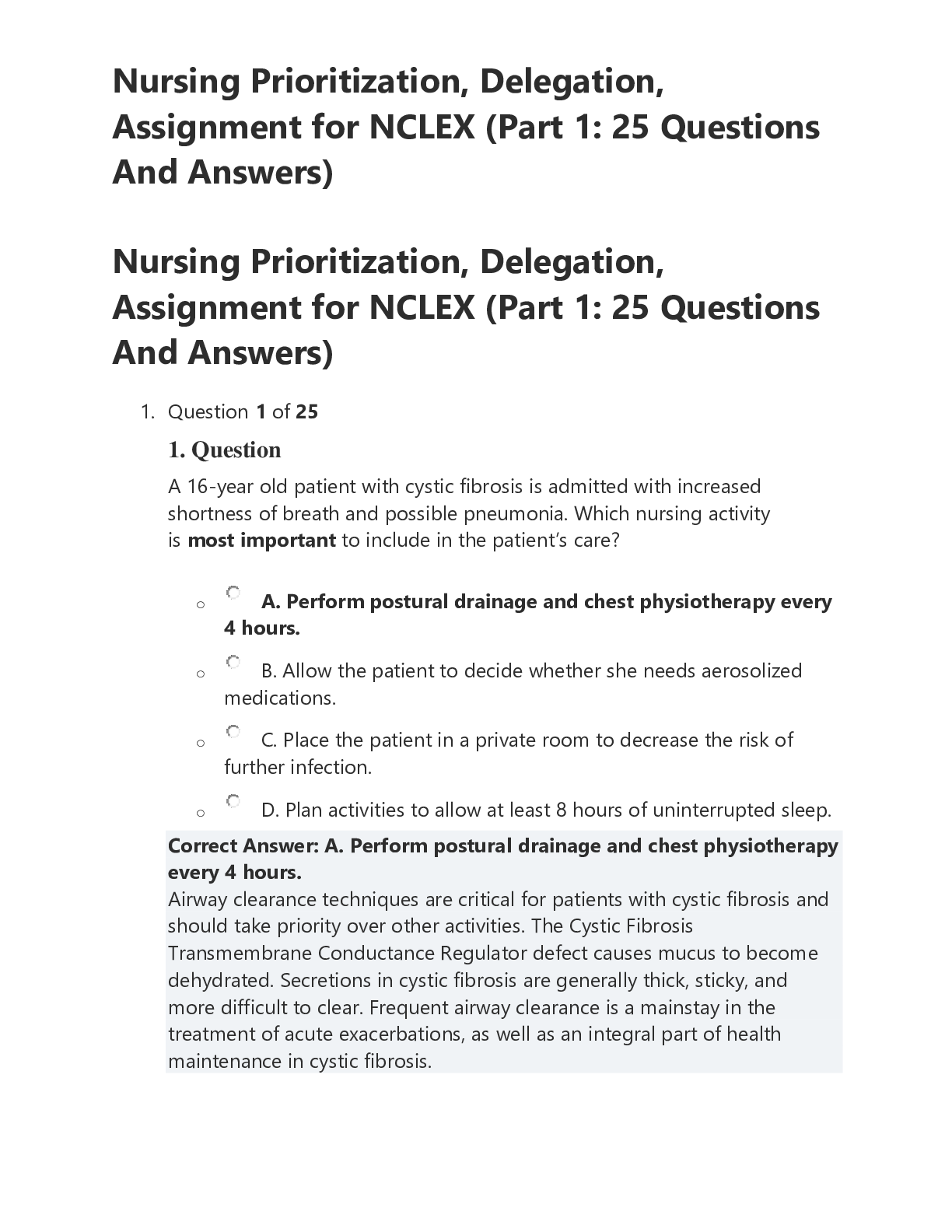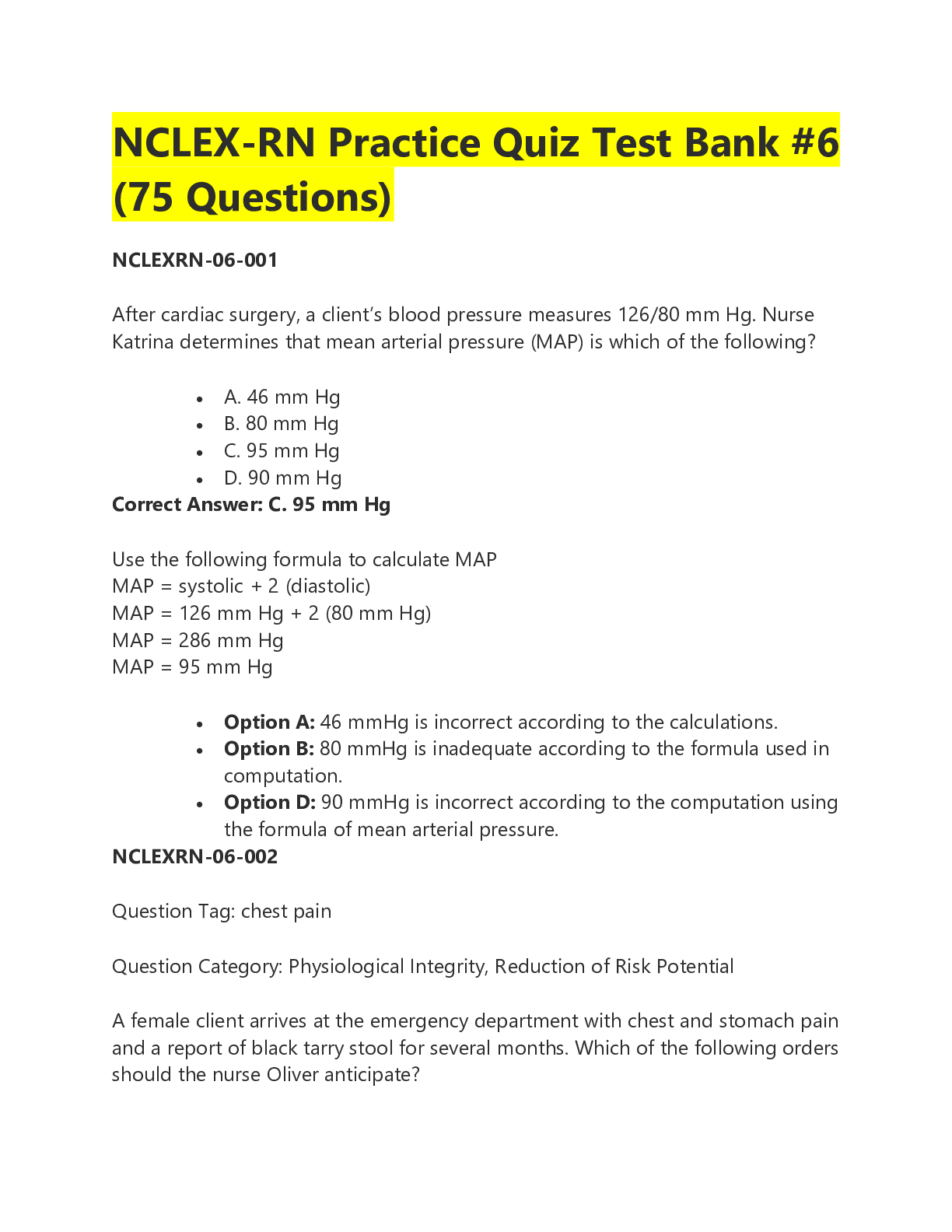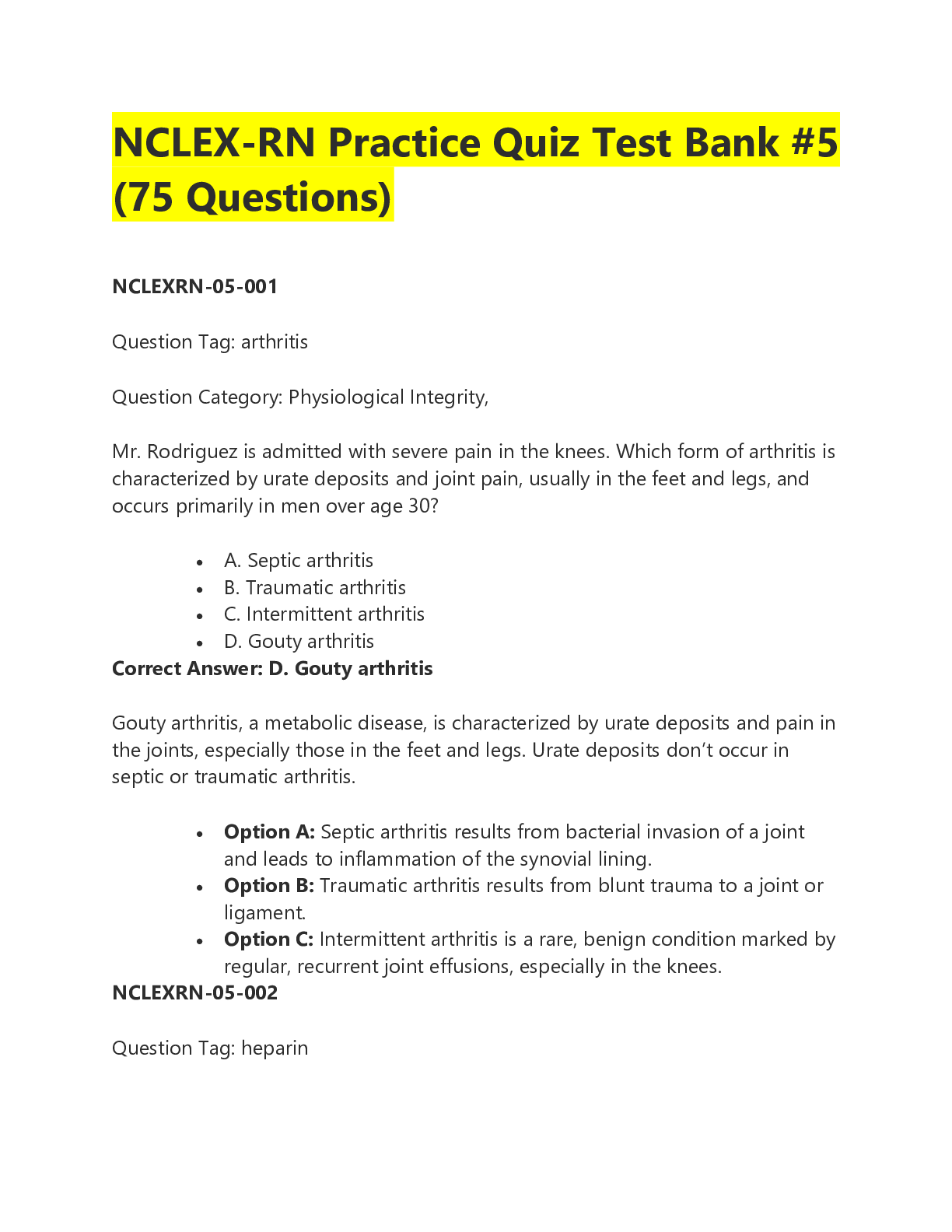*NURSING > NCLEX > Touhy & Jett: Ebersole and Hess’ Gerontological Nursing & Healthy Aging, 5th Edition/Chapter 17: L (All)
Touhy & Jett: Ebersole and Hess’ Gerontological Nursing & Healthy Aging, 5th Edition/Chapter 17: Living With Chronic Illness
Document Content and Description Below
Chapter 17: Living With Chronic Illness Touhy & Jett: Ebersole and Hess’ Gerontological Nursing & Healthy Aging, 5th Edition MULTIPLE CHOICE 1. An older female patient is diagnosed with a ... chronic illness. Which of the following principles should the nurse apply when answering her questions? 2. Which of the following describes the nurse’s role for an older patient with a chronic illness? 3. Which of the following statements is the most suitable for establishing goals when teaching an older adult with a chronic illness about potential changes in the health maintenance regimen? 4. Acute illness is to chronic illness as to which of the following comparisons? 5. More than 50% of the population aged 65 years and older has which one of the following chronic health conditions? 6. An older man who is right handed works as a carpenter, but he has been left with a flaccid right arm after a thrombus occluded a cerebral artery. Which is the most important goal for the plan of care to help this man achieve his optimal state of health and wellness? 7. An older woman has diabetes mellitus. Which patient assessment validates the nurse’s conclusion that she is in the foreground perspective of the shifting perspectives model of chronic illness? 8. Which of the following qualities does the nurse need to provide caring? 9. A nurse is caring for an older adult who is in the pretrajectory phase of the chronic illness trajectory. The nurse knows that this phase is characterized by which of the following? 10. A major difference in the diaNgnUoRsiSs oIfNchGrTonBic.dCisOeaMse between younger adults and older adults is that MULTIPLE RESPONSE 1. Which of the following types of phases are included in the chronic illness trajectory (CIT)? (Select all that apply.) a. Caring b. Plateau c. Instability d. Bargaining e. Deterioration f. Rehabilitation ANS: B, C, E The CIT includes a stable (plateau) phase, an unstable (instability) phase, and a downward and dying (deterioration) phase. The CIT does not include a caring phase, a bargaining phase, or a rehabilitation phase. PTS: 1 DIF: Remember REF: p. 232 TOP: Nursing Process: Assessment MSC: Health Promotion and Maintenance 2. Which factors are modifiable health risk behaviors for chronic illness? (Select all that apply.) a. Physical activity b. Prescription medication use c. Poor nutrition d. Tobacco use ANS: A, C, D Physical activity is modifiable; patients can begin an exercise program at any time. Nutrition is also a modifiable health risk behavior; patients have the ability to increase or decrease intake, depending on their weight and nutritional status. Tobacco use is also a modifiable behavior; patients can particiNpaUteRiSn Ia NsmGoTkiBng.cCeOssMation program or use other assistance to stop smoking. PTS: 1 DIF: Understand REF: p. 231 TOP: Nursing Process: Planning MSC: Health Promotion and Maintenance 3. A nurse is planning health education on chronic illnesses for a group of seniors in the community. When deciding upon which illnesses to focus on, the nurse knows that which of the following are the most common diseases in the United States? (Select all that apply.) a. Heart disease b. Hypertension c. Asthma d. Osteoarthritis e. Diabetes ANS: A, B, D The most common chronic diseases in the United States are heart disease, hypertension, and osteoarthritis. PTS: 1 DIF: Remember REF: p. 230 TOP: Teaching and Learning MSC: Physiological Integrity OTHER 1. The chronic illness trajectory (CIT) includes eight phases. List the phases in order, beginning with the first phase. a. Crisis b. Unstable c. Downward d. Dying e. Stable f. Acute g. Trajectory onset h. Pretrajectory ANS: H, G, A, F, E, B, C, D The phases of the CIT are pretrajectory, trajectory onset, crisis, acute, stable, unstable, downward, and dying. PTS: 1 DIF: Understand REF: p. 232 TOP: Nursing Process: Planning MSC: Health Promotion and Maintenance NURSINGTB.COM [Show More]
Last updated: 1 year ago
Preview 1 out of 6 pages
Instant download

Buy this document to get the full access instantly
Instant Download Access after purchase
Add to cartInstant download
Reviews( 0 )
Document information
Connected school, study & course
About the document
Uploaded On
Aug 08, 2021
Number of pages
6
Written in
Additional information
This document has been written for:
Uploaded
Aug 08, 2021
Downloads
0
Views
84


